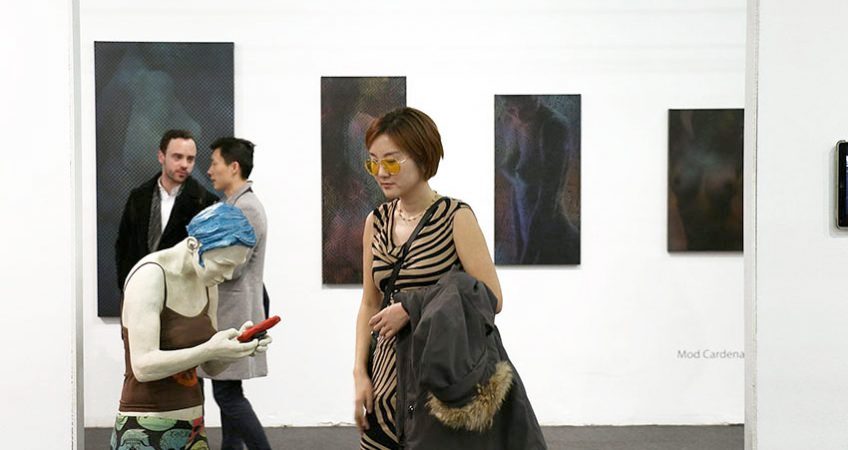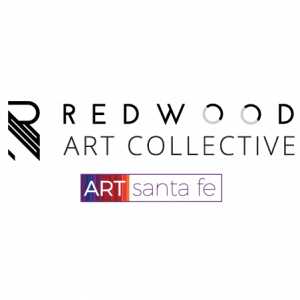
How to Buy Original Art Like a Collector
Wondering how to build an original art collection? Redwood CEO Eric Smith offers buying advice for new art collectors.
Eric Smith has been working in the art industry with galleries, artists, and art fairs for more than 25 years. If anyone knows how to buy original art and build a collection, it’s Smith. In this Q-and-A, Smith offers buying advice for new collectors.
Q: Why do we buy art?
A: The simple answer is to decorate our walls. In the early 1980s, I moved into a townhouse in Studio City, California, and needed to decorate the walls. My first piece of art was a Patrick Nagel poster. Later, after entering the art business in the mid-’80s, I developed a better understanding of art, artists, the history of art, techniques, mediums, and more. As a result, I found I enjoyed art and gained a deeper desire to collect. Art reflects who you are, your personality, and, quite often, the places you’ve been and the artists you’ve met.
Q: What does collecting original art look like today?
A: It all started with galleries representing artists and managing distribution, or placement, of their work to collectors and museums. Today, the sale of art includes three distribution methods: galleries, fairs, and online platforms. Over the past 40 years, art fairs have become an important way for artists and galleries to show and sell their work, accounting for more than 40% of their annual sales. Depending on the size of the fair, collectors can visit anywhere from 50 to 300 exhibits over a three- to five-day period and, many times, all under one roof. Art fairs are fun, easy to navigate, and exciting to visit.
Most recently, online sales have been growing at a rapid pace, currently accounting for approximately 10% to 15% of total global art sales and growing. In my opinion, art fairs and online sales will continue to be the two largest distribution methods for artists and galleries over the next 10 years.
Q: How do you research to find what you love?
A: There’s so much you can do online before you ever go to a gallery or art fair. Do you already know you love sculpture? Maybe your inclination is even more specific and you are really most interested in glass sculpture. Research online: Look at museum collections, find artists that do amazing glass sculptures, find galleries that feature glass sculpture artists, find out what you can learn on the various social media platforms. Now you have an idea of the scope of the category and probably a few of the artists’ names who interest you.
The next step is figuring out what you can afford and how the pieces you love are priced. You may already have a good idea from finding artists that interest you. Go to the artist’s websites or to gallery websites where they are featured. You may find prices there. Search by artist on some of the online art websites to see if you can find prices for their pieces. You really do need an idea of what you can plan to pay for your favorite artists’ work. You can always give the artist or gallery a call and ask them directly.
Remember, this is your art collection and should be pieces you love and will love to live with over the years. Listening to the art buzz might be useful—just be sure that the choices you make are your own and not just because they are being featured on social media or wherever else. Develop your eye, think about your space, determine your budget, and then dive in. Find what you love, and make your purchases.
Q: Is art an investment or for enjoyment?
A: Buying art is not like investing in the stock market. Some people say thinking about art as an investment is like thinking you are going to win the lottery. Some people do win the lottery, but the chances are very low. So your favorite piece of art may or may not go up in value. The most important aspect in collecting art is to collect pieces you really enjoy, pieces that make you smile every time you look at them, pieces that are rich in detail inviting you to explore them more deeply. Be prepared to keep the artwork and enjoy it. If it goes up in value, it’s an added bonus.
Q: What are some of the questions to think about when considering a particular piece of original art?
A: Where will it hang in your home? Is it the right size for the space, or will it displace something you already have? If you will need to move art around, where will all the pieces go? If it’s a sculpture piece, does it need a pedestal or will it set on a table? How will it look with the other pieces in the room? Will it complement or distract? Don’t overthink it, just make a plan in your mind. Many artists will also make a home visit to show you how it looks in your home. Or look for an online site with a great return policy, like Redwood’s Online Art Marketplace, where you can try a piece and return it within seven days.
Q: How do you determine a budget?
A: Your research will give you an understanding of a realistic budget for buying a particular artist’s work. Recently, I started to develop an interest in purchasing a Takashi Murakami piece for our son’s college graduation present. He has visited Japan on two separate occasions and has an interest in Japanese pop culture. I found a piece he would like priced at over $2,500. Imagine my surprise when on a recent trip to downtown L.A. I found the piece for $1,500. I ended up purchasing three pieces at $1,500 each. I now have two hanging in my home with my pop art collection and one wrapped for graduation. Crossing my fingers he’ll like my choice!
Q: How does it become a “collection”?
A: Generally speaking, an art collection is multiple pieces that have continuity. They tell the viewer a story. There’s a narrative developed between the pieces. A collection might be pieces assembled from the person’s travels chronicling the story of where they’ve been, maybe even subtle clues of when they were there. Some collections revolve around a particular artist or a theme. One collector who is a regular at Redwood’s fairs is always looking for small, unusual pieces to add to her collection, which is hung salon-style covering every inch of the walls of her home.
Q: What about photography and limited-edition prints?
A: Starting a collection with limited-edition prints and fine art photography can be a great way to begin. Both offer the opportunity to own great art at a lower price. Limited editions are limited-quantity prints of an original artwork. Fine art photography has increased in popularity recently and is a great choice because there is a wide range of subject matter and styles. As with any artwork, be sure to get a certificate of authenticity and know the provenance of how and where the piece was printed. Both are important aspects of establishing the inherent value of any piece of artwork.
Q: What do your collecting plans look like for 2020?
A: I’m always looking for something that catches my attention. I will definitely be picking up another Takashi Murakami piece. I have my eye on a 3D piece titled Mr. Dob Figure A (Dobtopus). It’s bright, colorful, and fun. I try to buy pieces that are timeless—meaning, hopefully, our kids will appreciate them as they get passed on.
To start building your original art collection, head on over to our Online Art Marketplace where you can shop from artists and galleries from around the world. For more tips on buying original art, attending fairs, and starting your own collection, sign up for Redwood Art Group’s mailing list below.






